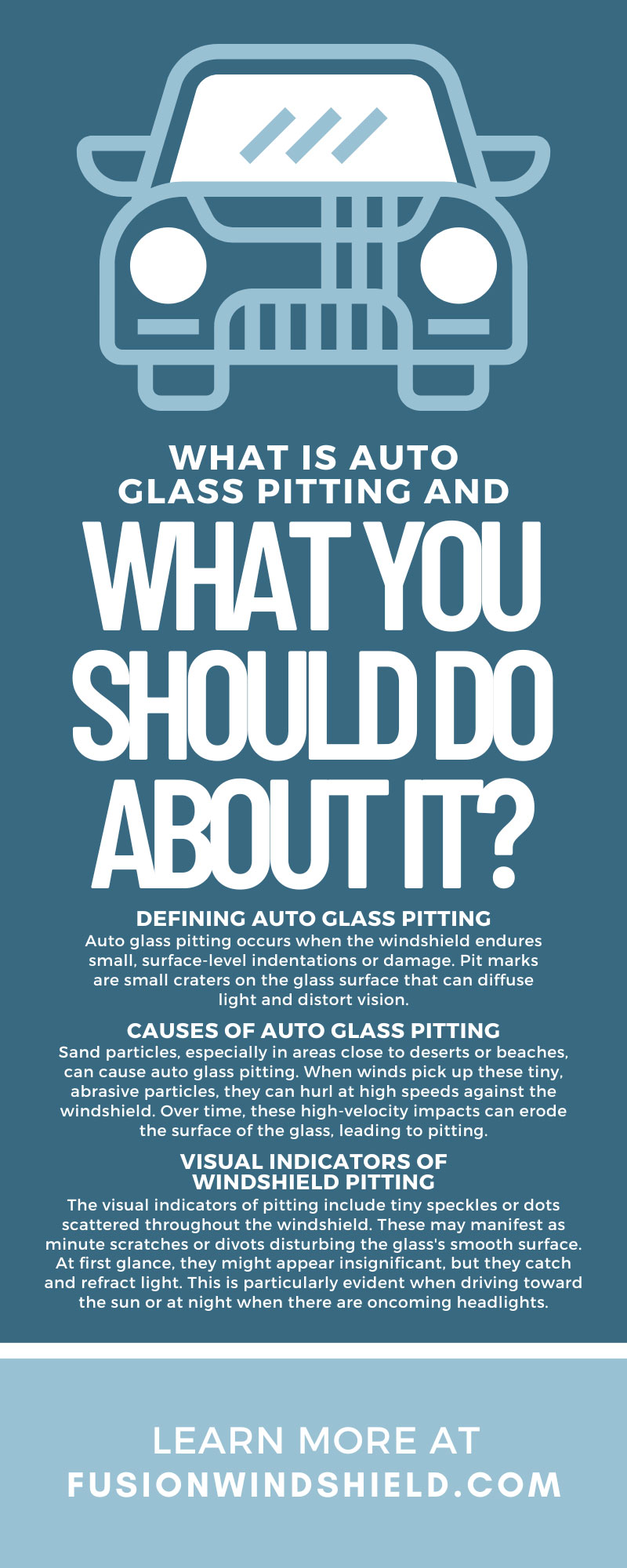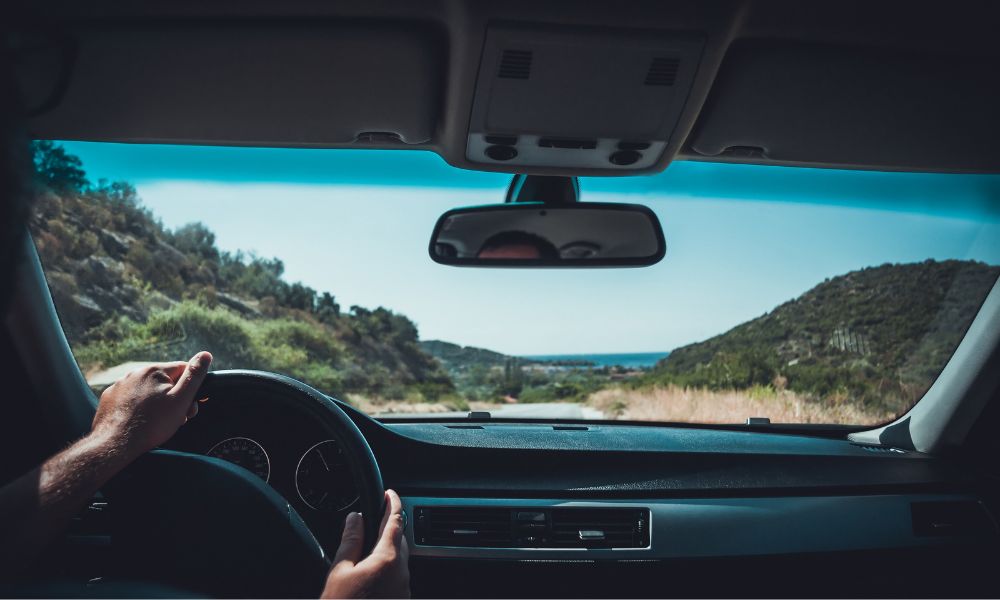When it comes to safe driving, clarity is key. Unfortunately, auto glass pitting is a common but overlooked enemy to clear vision on the road. This sneaky culprit can jeopardize your car’s aesthetic and safety features. Small, sparkling pits can form over time, marking the glass and obscuring your view. For deeper insight, read this guide on auto pitting and what to do about it.
Defining Auto Glass Pitting
Auto glass pitting occurs when the windshield endures small, surface-level indentations or damage. Imagine the windshield as the protector of your driving view, shielding you from the elements while allowing you a clear perspective of the road. Pit marks are small craters on the glass surface that can diffuse light and distort vision. They’re especially noticeable when sunlight or headlights strike the glass at certain angles.
Causes of Auto Glass Pitting
Auto glass pitting is a common issue for vehicle owners, especially those who frequently drive in harsh conditions or on busy roads. Different causes of auto glass pitting exist, but they all relate to abrasive element exposure. Let’s dive deeper into each cause and understand what to consider regarding this type of damage.
Sand Particles
Sand particles, especially in areas close to deserts or beaches, can cause auto glass pitting. When winds pick up these tiny, abrasive particles, they can hurl at high speeds against the windshield. Over time, these high-velocity impacts can erode the surface of the glass, leading to pitting. This is more common in areas with frequent sandstorms or in locations near construction sites where sand and dust are airborne.
Gravel and Road Debris
Gravel, small stones, and various forms of road debris are the most common contributors to windshield pitting. Vehicles ahead can kick up these materials, creating a barrage of projectiles that strike the windshield of other vehicles behind them (including yours). Highways and unpaved roads are hotspots for such occurrences, where the combination of high speeds and loose surfaces increases the likelihood of windshield damage.
General Wear From Environmental Elements
Aside from direct impacts from sand, gravel, and road debris, general wear from environmental elements also plays a role in auto glass pitting. This includes exposure to acidic rain, which can weaken the glass surface over time, making it more susceptible to pitting. Additionally, extreme temperature fluctuations can stress the glass, potentially leading to microfractures that could evolve into pits under the right conditions.
It’s important to understand that auto glass pitting occurs gradually and is difficult to notice until it significantly impairs visibility. Regular inspections of your windshield can help identify early signs of pitting before they become severe.
Visual Indicators of Windshield Pitting
The visual indicators of pitting include tiny speckles or dots scattered throughout the windshield. These may manifest as minute scratches or divots disturbing the glass’s smooth surface. At first glance, they might appear insignificant, but they catch and refract light. This is particularly evident when driving toward the sun or at night when there are oncoming headlights.
A lesser-known indicator of auto glass pitting is a subtle distortion or waviness in the glass that affects visibility. When the pitting is widespread, light refracts through the affected windshield areas.
The Importance of Early Detection
Early identification of issues can prevent the pitting from worsening and compromising safety. You can catch early signs of wear by regularly cleaning your windshield and inspecting it in good lighting.
If you detect pitting early, you can slow damage progression by applying a protective film to the windshield or adjusting your driving habits. For instance, avoid following trucks closely or driving fast on unpaved roads.
However, once the pitting significantly impairs visibility, you must replace the windshield. Driving with a pitted windshield reduces your clear view of the road and can cause your vehicle to fail safety inspections in some jurisdictions.
The Risks of Ignoring Pitting
Ignoring the signs of pitting on your windshield might seem like a minor oversight at first. However, this seemingly small issue can escalate into significant risks that affect your overall driving experience and safety. Here’s a closer look at the consequences of overlooking windshield pitting.
- Impaired visibility: As more pits form on the glass surface, they can scatter light and create a visual disturbance. This is problematic under heavy rain or fog, where maximum visibility is necessary. Damage can obscure your view of road signs, oncoming traffic, and potential hazards, increasing the likelihood of accidents.
- Increased glare: During the day, sunlight can reflect off the pitted areas, causing bright spots that can momentarily blind you. At night, the pits refract the lights from oncoming vehicles, streetlights, and other sources, creating a dazzling effect that can disorient your vision.
- Compromised structural strength: Pitting weakens the windshield over time, making it more susceptible to cracks and shattering under impact. In the unfortunate event of a collision, a compromised windshield poses a greater risk of injury to the passengers due to reduced protection.
Preventing Auto Glass Pitting
Take preventive measures to minimize the risk of auto glass pitting. Maintain a safe distance from trucks and other vehicles (especially when driving on highways) to decrease the likelihood of debris striking your windshield.
Moreover, choose smoother routes instead of rough, unpaved roads where flying debris is more likely to cause damage. Additionally, make sure to clean your windshield regularly. This removes any abrasive materials that could scratch the glass surface.
Investing in high-quality windshield wipers and automotive glass cleaners helps prevent pitting as well. Good wipers remove abrasive materials effectively without scratching the glass, and the right cleaner maintains the integrity of the windshield’s surface.
Solutions for Windshield Pitting
What should you do about auto pitting? Act swiftly by consulting professionals like Fusion Windshield Repair. We can assess the damage and recommend the best course of action. If we catch pitting early, we can repair the windshield instead of replacing the auto glass.
In severe cases of pitting where the damage significantly impairs visibility and compromises safety, replacement is the only viable option. Ensuring clear vision and maintaining the highest level of safety on the road is essential. Trust in our expertise to help you make the right decision for your vehicle, ensuring your driving experience remains safe and enjoyable.
Seeing Clearly on the Journey Ahead
Remember that your windshield is more than a piece of auto glass; it’s your window to the vast roads and destinations waiting for you. Auto glass pitting might appear inconsequential initially, but it holds significant power over your driving experience. By understanding what causes it, recognizing the signs, and taking swift action, you contribute to safer roadways for yourself and others.
Let Fusion Windshield Repair Help You
Don’t let auto glass pitting compromise your safety on the road! At Fusion Windshield Repair, we offer expert repair of windshield pitting, ensuring your view remains clear and your journey stays safe. But that’s not all. We also offer exceptional windshield calibration services. Contact us today to schedule an appointment and experience the peace of mind of knowing your vehicle is in the best hands.



Recent Comments